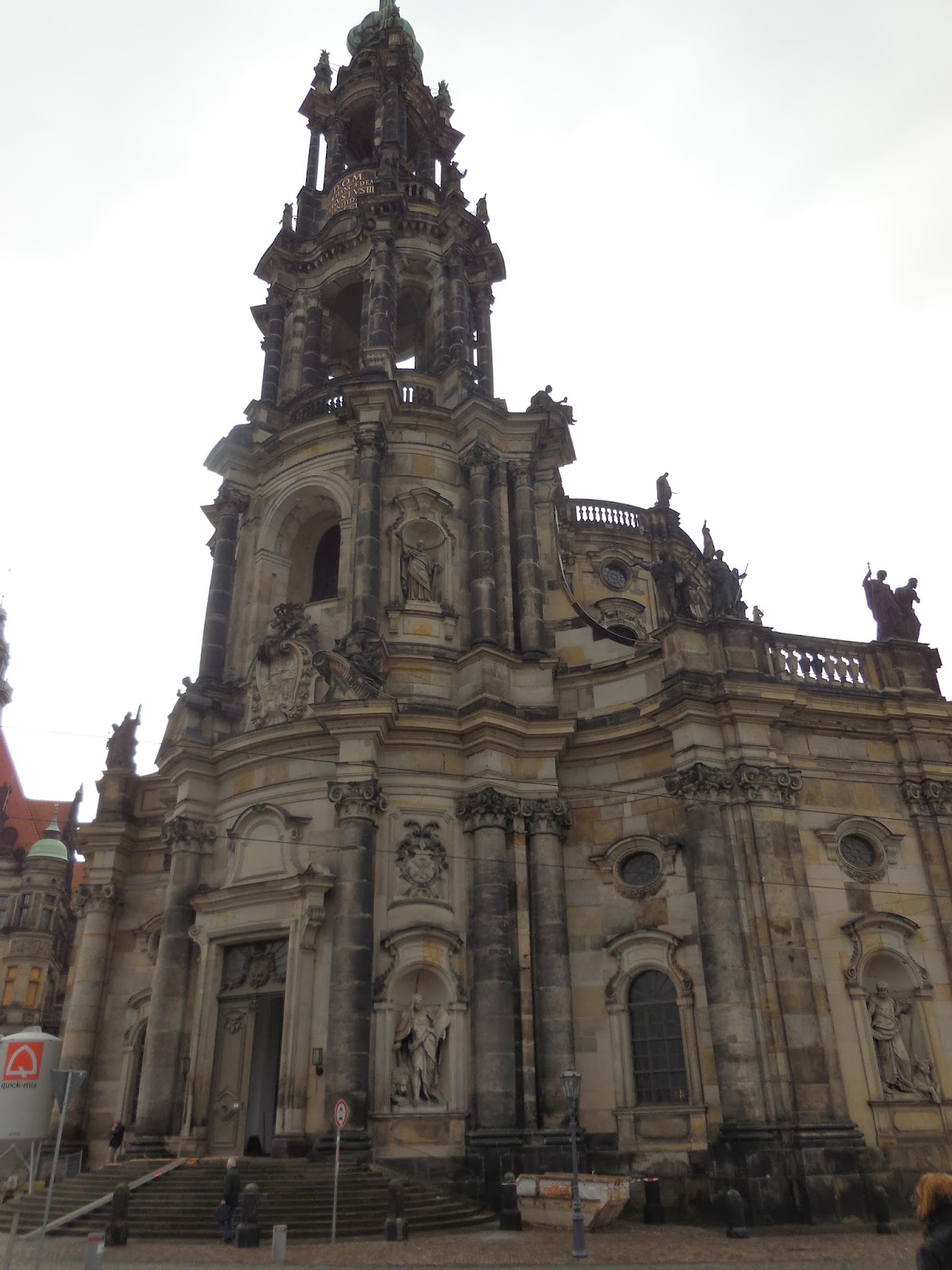Beautiful Dresden, Germany….once called "The Jewel Box" due to its beautiful baroque and rococo architectural styles on the Elbe River
As we traveled to Freiberg we bypassed Dresden. It was less than an hour drive east from Freiberg, so on Friday afternoon we drove back to Dresden and spent 4-5 hours exploring this beautiful German city.
Prior to WWII, Dresden was known as the "Florence of the Elbe"….then the entire city center was destroyed near the end of WWII, somewhat like what happened to the city of Warsaw.
While Warsaw was destroyed by Germans, Dresden was destroyed by English and American forces in four massive incendiary bombing raids from February 13-15, 1945.
Reconstruction and restoration of the former beauty of Dresden continues to this day.
Reconstruction and restoration of the former beauty of Dresden continues to this day.
Here are some highlights from a few hours in Dresden….
Frauenkirche
Frauenkirche (Church of Our Lady), one of Dresden's most beloved symbols, has "risen from the ashes." For over 200 years this church was a part of Dresden's skyline…then 2 days after the WWII bombing it collapsed.
The East German government wanted to leave the rubble as a war memorial, but after the reunification of Germany a movement was made to reconstruct and rebuild this landmark. It was reopened in 2005.
Frauenkirche is a Lutheren Church in Dresden. This church has one of the largest domes in all of Europe….it sits in the middle of the city center and it is really quite beautiful!
Hofkirche
One of the most beautiful buildings in Dresden is the church below…Hofkirche (Church of the Court). We found this building most interesting because it has a Polish connection.
Augustus II the Strong converted to Catholicism so he could become King of Poland. Dresden was a Protestant city which had recently built the beautiful Frauenkirche in 1743.
Augustus III decided there should also be a Catholic church, so to counter-balance the newly constructed Protestant Frauenkirche, he had the Catholic Hofkirche built.
Many of the stone walls of the pre-war buildings that have been reconstructed in the city center are black from having been burned during the bombing. It is amazing to see the burned sides, columns and walls.
Many of the stone walls of the pre-war buildings that have been reconstructed in the city center are black from having been burned during the bombing. It is amazing to see the burned sides, columns and walls.
The Royal Palace is a beautiful castle built by Frederick Augustus II the Strong, King of Poland. He built this massive baroque palace for his residence in Dresden.
It was heavily bombed during the war and was later rebuilt to house beautiful works of art.
….we saw interesting archways….
….cobblestoned streets….
….decorative street lamps….
….and beautiful architecture. No matter which direction we looked there was always something interesting to see.
And though a bit rainy, we enjoyed walking in and around Dresden.
In the picture below, Mark and I stand in the entryway of the Old Town. Part of the Royal Castle is behind us, with the Catholic Hofkirche to the right.
Mark ordered a traditional German meal.
After lunch we boarded a bus tour around the city. Riding on the bus was a good way for us to see the many beautiful and historical sites….

.…especially since we were only going to be in Dresden for a few hours.
Semperoper
The first site on the city tour was Theatre Square with the majestic opera house. The Semperoper is said to be one of the most beautiful opera houses in the world.
Zwinger
The Zwinger is a complex of pavilions and galleries around a huge open esplanade. The name refers to the open space between the inner and outer walls of a fortress. The Zwinger once served as a gallery, a festival arena, and an orangery (greenhouse for orange trees).
One feature of the Zwinger is the Crown Gate, which sits in the center of the famous Zwinger beneath a Polish crown with four eagles.
Originally the Zwinger was part of the Dresden fortress. This building was heavily destroyed but it was also rebuilt and today is a museum.
….is also part of the town hall area.
Yenidze
When we first drove through Dresden, we passed this large, ornate building. We thought it was a religious structure of some kind. However, it was a factory that produced tobacco products in the early 1900s….so is sometimes called the "Tobacco Mosque".
From the Old Town side of Dresden, we saw beautiful countrysides with homes scattered on the hillsides.
We crossed over the Elbe River and had a closer look at this side of Dresden.
The New Town side was quite beautiful.
Crossing the Elbe and returning to the Old Town side of Dresden….
.…we passed the same spot where 300 years earlier, the Italian artist Canaletto made his famous painting of Dresden (below).
While Mark and Grace ordered a snack, I had a look at the city center's outdoor skating rink. I was curious about the little penguins people were leaning on….
….and realized that they were like "walkers" when a child learns to walk….but for learning how to ice skate!
We found a city map of the historical area…which showed the location of the old and new areas of Dresden.
Across from the city map, there was an excavation site.
Though chilly outside, Mark was enticed by a German ice cream shop.
Nearby we saw another Ampelmann Store…similar to one I saw last summer while visiting Berlin with my sister and her granddaughter. The "Ampelmann" is the pedestrian sign seen on crosswalk signals in the former East German cities.
Dresden is a beautiful historical city….it celebrated it 800th birthday in 2006!
The city's pre-WWII beauty is gradually being restored, even though the name "Dresden" evokes a city of much destruction.
It was enriching to explore Dresden, Germany even for just a few hours.



































































